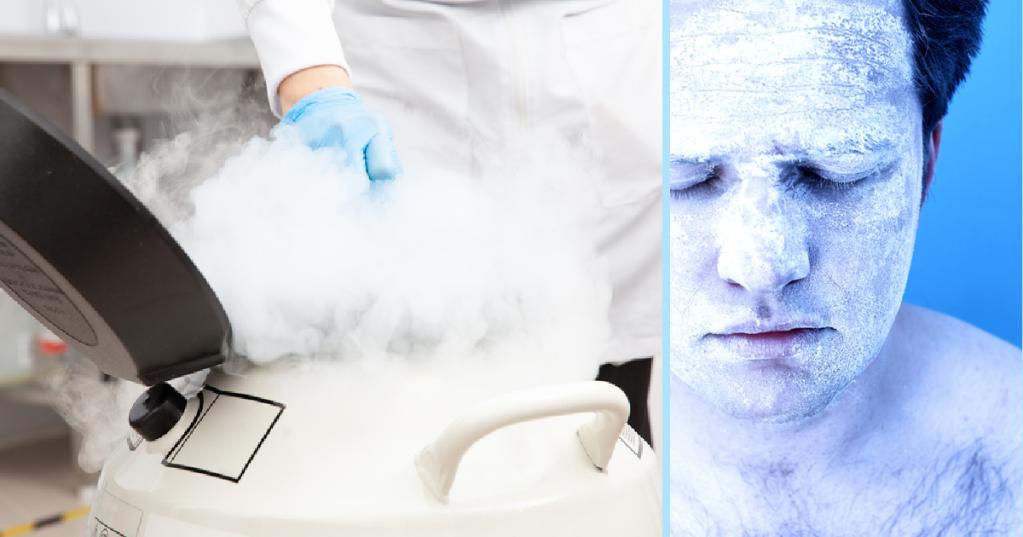Given that death is one of the things people fear more than anything, it’s not surprising that we’ve been thinking for awhile about how we can thwart it.
Cryonics, which is the attempt to freeze the bodies of the recently deceased in the hope that they can be revived and cured later on, has a long and honestly pretty grim history.
An article published in 1992 detailed some of the more gruesome mistakes, probably in the hopes that future scientists would be able to learn from previous miscalculations.
Image Credit: iStock
One of the biggest issues is the freezing process itself–the ice crystals that for in your cells will eventually destroy them beyond repair.
Basically, you remain a popsicle forever, because no one can revive you if you have no working cells.
Cryonic’s company Alcor defrosted three corpses in 1984 with the intention of checking what damage had been sustained. First, the bodies were “converted to neuropreservation,” which means their heads were preserved (ew), and then scientists dug in.
From the outside, the damage didn’t look all that bad, “resembling the type of cracking observed in deteriorating coatings, such as is seen in paint peeling away from a wall. The skin adjoining the fracture fissure was somewhat raised from the underlying fat and gave the appearance of having ‘peeled away’ slightly.”
Again, ew.
Image Credit: iStock
Deeper fractures were discovered, however, as the bodies thawed, and there was also plenty of organ damage to go around.
“Examination of the internal organs of patient three revealed fractures present in almost every organ. The spinal cord, aorta, thoracic inferior vena cava, pulmonary artery, myocardium, right lung, liver, pericardium, stomach, ileum, colon, mesentery, spleen, skeletal muscle, and pancreas, were all seriously fractured.”
Also? The spinal cord had been snapped in three places.
The team believed that all of the damage could be put down to the thawing process.
“As cooling proceeds below the glass transition phase of water (TG), different organs and tissues within the patient’s body will begin to contract at different rates. However, because the system is now in a solid state, these materials, bonded to each other by ice/cryoprotective agent mixtures, will be unable to contract independently.”
And this is what happens when everything goes right during the freezing process.
Image Credit: iStock
What happens if, for some reasons, bodies are not kept at the optimal temperature in their chambers?
Unsurprisingly, nothing pretty.
We know that because at least one company, started by Robert Nelson, saw too many storage, venue, and payment issues that resulted in him just eventually allowing the bodies in his care to thaw.
“The stench near the crypt is disarming, strips away all defenses, spins the stomach into a thousand dizzying somersaults.”
Nelson defended himself, though he likely realized they had not realized the best possible outcome.
“I haven’t done anything criminal, anything wrong other than a lot of bad decisions. It didn’t work. It failed. There was no money. Who can guarantee that you’re going to be suspended for 10 or 15 years.”
When malfunctions happen, families usually opt to bury their loved ones traditionally, though the reality of being the mortician in these cases is less than pleasant.
Image Credit: iStock
One detailed that they “used a breathing apparatus when the capsule on its side had to be entered to remove the remains which had fallen to the bottom and frozen in place in a plug of body fluids.”
Ew. Right?
Now that cryonics has garnered more financial backing and interest from those who are invested in its future, proponents are sure all of those hurdles will be overcome.
Only time will tell.
